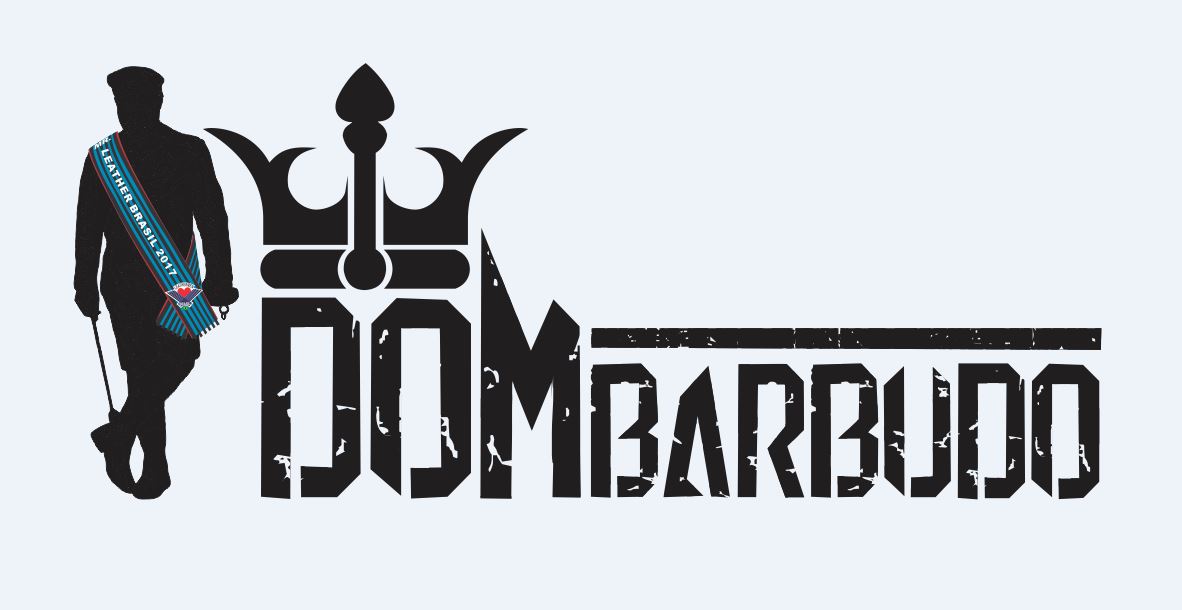📖 1 – TERMO E CATEGORIA
OBEDIENCE TRAINING (Treinamento de Obediência)
CATEGORIA: CONCEITO Obedience Training se enquadra como um conceito dentro do BDSM, pois trata do processo de condicionamento, disciplina e submissão através de treinamento estruturado e contínuo.
🔑 2 – PALAVRAS-CHAVE
Treinamento de submissos, adestramento BDSM, dominação disciplinar, submissão intensa, condicionamento, controle, reprogramação comportamental, reforço positivo, submissão voluntária, disciplina rígida.
🔠 3 – DEFINIÇÃO
Obedience Training é um processo de treinamento no BDSM focado na submissão, disciplina e obediência de um parceiro submisso. Envolve métodos que condicionam comportamentos desejados através de reforço positivo e negativo, criando uma dinâmica de controle e respeito absoluto à autoridade do dominante.
🔎 4 – SIGNIFICADO
O treinamento de obediência vai além da simples submissão. Ele molda a mente e o corpo do submisso para atender às expectativas do dominador de forma natural e espontânea. A obediência não se resume a seguir ordens, mas a internalizar regras, hábitos e comportamentos que reforçam a hierarquia dentro da relação. Esse tipo de adestramento pode variar de comandos verbais simples até uma programação comportamental completa, onde cada atitude do submisso reflete o controle do dominante.
🔗 5 – APLICAÇÃO
O treinamento pode incluir tarefas diárias, posturas de submissão, restrição de escolhas pessoais, regras sobre vestimenta, comunicação e movimentação. O dominador pode usar comandos específicos, recompensas por cumprimento exemplar e punições para correções. Dependendo do nível de entrega, o treinamento pode incluir aspectos físicos, psicológicos e sensoriais, transformando o submisso em um reflexo da vontade do dominante.
🧠 6 – IMPACTO PSICOLÓGICO
Mentalmente, o treinamento pode fortalecer a conexão entre dominador e submisso, criando um laço de confiança e dependência psicológica intensa. Fisicamente, o corpo do submisso se adapta à disciplina imposta, seja por resistência a desconforto, postura, ou estímulos sensoriais. Emocionalmente, a submissão bem treinada gera segurança e satisfação, enquanto a busca pela aprovação do dominador se torna uma fonte de prazer.
📢 7 – RELAÇÃO COM OUTROS TERMOS
Obedience Training se relaciona diretamente com práticas como TPE (Total Power Exchange), Behavioral Training, Protocolos de Submissão, Servitude, Humilhação erótica e Reforço Positivo/Negativo.
🔒 8 – SIMBOLOGIA E REPRESENTAÇÃO NO BDSM
Símbolos como coleiras, pulseiras de obediência e gestos de submissão (como se ajoelhar) são frequentemente associados ao treinamento. O uso de palavras de ativação e respostas padronizadas reforça a ideia de controle absoluto.
🤝 9 – NEGOCIAÇÃO
É essencial estabelecer limites e entender a predisposição do submisso antes de iniciar um treinamento intensivo. Comunicação clara, palavras de segurança e check-ins regulares são fundamentais para evitar abusos e garantir que o treinamento seja prazeroso para ambos.
💊 10 – CUIDADOS ANTES E DEPOIS
Antes de iniciar o treinamento, é necessário alinhar expectativas e testar gradualmente os métodos. Depois de sessões intensas, o aftercare ajuda a manter o equilíbrio emocional do submisso, garantindo que ele se sinta seguro, valorizado e mentalmente estável.
🚀 IMPACTO FINAL
Obedience Training não é só sobre submissão, é sobre aperfeiçoamento, entrega e transformação para um nível superior de conexão e controle absoluto.
🔍 6 PERGUNTAS COMPLEMENTARES
🔍 1. Como transformar a obediência em prazer real para o submisso?
Obediência deixa de ser esforço quando vira fonte de recompensa. A mente do submisso aprende que cada “sim, Senhor” traz aprovação, prazer ou alívio. É um vício silencioso: obedecer para merecer, servir para ser notado, seguir para ser usado. Quando o submisso goza de ser controlado, você venceu. O prazer dele passa a vir da sua vontade, não da dele.
🔍 2. Qual o primeiro erro que um Dominador comete ao treinar obediência?
Querer submissão sem rotina. Treinamento exige constância, não improviso. Ordem dada uma vez é lembrada. Ordem repetida diariamente é gravada. A mente do submisso precisa de reforço até obedecer virar reflexo. Quem treina com falha ensina que pode ser ignorado. E Dominador que não impõe constância, perde o trono.
🔍 3. Como a linguagem corporal pode ser usada para condicionar a obediência?
Sem dizer uma palavra, você impõe. Um olhar firme, um levantar de sobrancelha, um passo em direção ao submisso — tudo comunica hierarquia. Treinar obediência vai além da voz. O corpo comanda antes da fala. Ensine o submisso a obedecer pelo gesto, não apenas pela ordem. Quando ele tremer com o seu silêncio, o treino está funcionando.
🔍 4. Obediência deve ser recompensada ou é dever absoluto do submisso?
Obediência é dever. Mas ser recompensado por ela transforma o dever em devoção. A recompensa não precisa ser carinho — pode ser um toque, uma palavra, um gozo autorizado. A chave está em ensinar que obedecer é esperado… mas obedecer bem pode render prazer. O submisso que deseja te agradar por escolha se dobra mais rápido que o que obedece por medo.
🔍 5. Qual a diferença entre obediência cega e obediência condicionada?
Obediência cega é perigosa — não forma submissos, forma robôs. Obediência condicionada molda a mente. Ela é construída com regras, consequências e reforço emocional. O submisso sabe o motivo, sente o impacto e aprende a desejar obedecer. Ele se curva porque entende o valor de estar de joelhos — não porque foi programado sem alma.
🔍 6. Como manter o submisso obediente mesmo fora da sessão BDSM?
Com ordens silenciosas. Exija mensagens em horários fixos, selfies em determinadas posições, comandos para uso de peças específicas. O corpo pode estar longe, mas a mente permanece algemada. A obediência fora da sessão prova que o controle é real — não é teatro. É quando ele te chama de Senhor na rotina, não no quarto, que você sabe que treinou certo.

📖 1 – TERM AND CATEGORY
OBEDIENCE TRAINING (Obedience Training)
CATEGORY: CONCEPT Obedience Training falls under the concept category within BDSM, as it deals with the process of conditioning, discipline, and submission through structured and continuous training.
🔑 2 – KEYWORDS
Submissive training, BDSM conditioning, disciplinary domination, intense submission, behavioral modification, control, behavioral reprogramming, positive reinforcement, voluntary submission, strict discipline.
🔠 3 – DEFINITION
Obedience Training is a BDSM training process focused on submission, discipline, and obedience of a submissive partner. It involves methods that condition desired behaviors through positive and negative reinforcement, creating a dynamic of control and absolute respect for the dominant’s authority.
🔎 4 – MEANING
Obedience training goes beyond simple submission. It shapes the submissive’s mind and body to meet the dominant’s expectations naturally and spontaneously. Obedience is not just about following orders but internalizing rules, habits, and behaviors that reinforce hierarchy within the relationship. This type of training can range from simple verbal commands to complete behavioral programming, where every action of the submissive reflects the dominant’s control.
🔗 5 – APPLICATION
The training may include daily tasks, submissive postures, restriction of personal choices, rules regarding dress code, communication, and movement. The dominant may use specific commands, rewards for exemplary performance, and punishments for corrections. Depending on the level of submission, training may include physical, psychological, and sensory aspects, transforming the submissive into a reflection of the dominant’s will.
🧠 6 – PSYCHOLOGICAL IMPACT
Mentally, training can strengthen the bond between the dominant and submissive, creating a deep psychological connection and dependency. Physically, the submissive’s body adapts to the imposed discipline, whether through discomfort tolerance, posture control, or sensory stimuli. Emotionally, well-trained submission generates security and satisfaction, while seeking the dominant’s approval becomes a source of pleasure.
📢 7 – RELATION TO OTHER TERMS
Obedience Training is directly related to practices such as TPE (Total Power Exchange), Behavioral Training, Submission Protocols, Servitude, Erotic Humiliation, and Positive/Negative Reinforcement.
🔒 8 – SYMBOLISM AND REPRESENTATION IN BDSM
Symbols such as collars, obedience bracelets, and submissive gestures (such as kneeling) are frequently associated with training. The use of activation words and standardized responses reinforces the idea of absolute control.
🤝 9 – NEGOTIATION It
is essential to establish boundaries and understand the submissive’s willingness before starting intensive training. Clear communication, safewords, and regular check-ins are fundamental to prevent abuse and ensure that the training is pleasurable for both parties.
💊 10 – CARE BEFORE AND AFTER
Before starting training, it is necessary to align expectations and gradually test methods. After intense sessions, aftercare helps maintain the submissive’s emotional balance, ensuring that they feel safe, valued, and mentally stable.
🚀 FINAL IMPACT
Obedience Training is not just about submission; it is about refinement, surrender, and transformation to a higher level of connection and absolute control.
🔍 6 COMPLEMENTARY QUESTIONS
🔍 1. How do you turn obedience into real pleasure for the submissive?
Obedience stops being an effort when it becomes a source of reward. The submissive’s mind learns that every “yes, Sir” brings approval, pleasure, or relief. It’s a silent addiction: obey to earn, serve to be seen, follow to be used. When the submissive gets off on being controlled, you’ve won. His pleasure no longer comes from himself—it comes from your will.
🔍 2. What’s the first mistake a Dominant makes when training obedience?
Wanting submission without routine. Training demands consistency, not improvisation. An order given once is remembered. An order repeated daily is carved into the mind. The submissive’s brain needs reinforcement until obedience becomes instinct. If your training is inconsistent, you’re teaching that disobedience is an option. And a Dominant who doesn’t enforce routine, loses the throne.
🔍 3. How can body language be used to condition obedience?
Without a single word, you command. A firm stare, a raised eyebrow, a silent step toward the submissive—everything speaks hierarchy. Obedience training goes beyond voice. The body commands before the mouth opens. Teach the submissive to obey gestures, not just orders. When he trembles at your silence, the training is working.
🔍 4. Should obedience be rewarded or is it the submissive’s basic duty?
Obedience is a duty. But rewarding it turns duty into devotion. The reward doesn’t have to be affection—it can be a touch, a word, an allowed orgasm. The key is teaching that obedience is expected… but good obedience can bring pleasure. A submissive who wants to please will kneel faster than one who obeys out of fear.
🔍 5. What’s the difference between blind obedience and conditioned obedience?
Blind obedience is dangerous—it doesn’t create submissives, it creates robots. Conditioned obedience shapes the mind. It’s built with rules, consequences, and emotional reinforcement. The submissive knows the why, feels the impact, and learns to crave obedience. He kneels because he understands the value of surrender—not because he’s mindlessly programmed.
🔍 6. How do you keep a submissive obedient even outside the BDSM scene?
With silent commands. Require check-ins at set times, selfies in assigned poses, instructions to wear specific items. The body may be elsewhere, but the mind stays cuffed. Obedience outside the scene proves that control is real—not just performance. When he calls you Sir during daily life, not just in the dungeon, that’s when you know the training worked.







